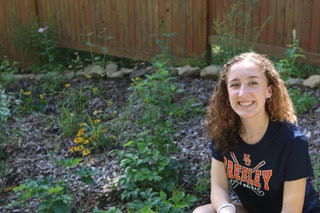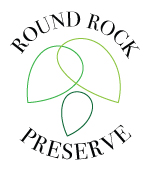Preserve News
May, 2023
Goats to the rescue!
A herd from Fat & Sassy Goats spent two weeks this Spring noshing on invasive plants in our meadow!
The meadow, once undisturbed woodlands, was cleared, gouged, and left full of debris when the previous owner — a developer — went bankrupt and never finished the building project. Over time, the clearing became choked with aggressive, invasive plants creating an ecosystem unsuited for native pollinators.
That’s where the goats stepped in, offering a nontoxic approach to helping us return the meadow to health. In no time flat, they cleared the meadow of early sprouting, aggressive weeds like mugwort … freeing up air, sun, and nutrients so the later-sprouting native plants can thrive. And they cheered everyone with their friendly bleating and curiosity.
Thanks to Jenn Balch, Donald Arrant — and their wonderful, hungry, goats — the Preserve’s meadow has had a great Spring cleaning!
Preserve News
April, 2023
Westchester Land Trust Protects 11.71 Acres at Round Rock Preserve in New Castle.
Westchester Land Trust (WLT), a nationally accredited land conservation nonprofit headquartered in Bedford Hills, NY, announced the permanent protection of three parcels of land totaling 11.71 acres in New Castle.
“This project is a perfect example of the power individual action can have, not only protecting open space, but reimagining possibilities for land that has already been partially or fully developed,” said Janelle Robbins, vice president of conservation at Westchester Land Trust. “We’re grateful this land will be returned to its natural state for the community to enjoy.”
Preserve News
September, 2020
Round Rock Preserve is excited to announce the completion of a brand new native pollinator garden and bluebird sanctuary! Conceived and completed by Chappaqua Girl Scout Stephanie Kasulka as her Gold Award project, the highest achievement in Girl Scouting, the garden and sanctuary are treasured additions that support the Preserve’s mission to heal and protect this land for the wildlife that lives here. Stephanie involved members of the greater community as well as younger scouts, spreading the word about the importance of native plants and pollinators.
Congratulations, Stephanie … the Preserve and the pollinators thank you!
My name is Stephanie Kasulka. I have been a Girl Scout for 12 years, and now that I am a rising senior at Horace Greeley High School, I am completing my Gold Award project. Before being restored, the land that is now the Round Rock Preserve was heavily disrupted by construction. This rapid conversion of natural land into construction sites has destroyed the habitats of many pollinators and allowed for invasive species to creep in. To help combat this, I decided to focus on making the preserve a safe space for pollinators. Although most pollinators are very small, their importance is not to be overlooked. Pollinators are responsible for fertilizing plants through a process called pollination. This process requires pollinators to transfer pollen from a male to a female plant in order to create the production of seeds. The majority of agriculturally produced food relies on pollination by animals and insects. This means that if pollinators were to disappear, plants that humans, as well as many other animals, depend on as a food source, would grow smaller in size, in lesser quantities, or in some cases not at all. If pollinators were unable to perform their vital job, the consequences would destroy the food chain. Additionally, pollinators play a key role in the maintenance of clean air and water as plants that require pollination are also responsible for the production of oxygen and the prevention of erosion that would contaminate water. In order to support the pollinators on the preserve, I created a 480 square foot pollinator garden filled with over 60 plants and established 6 bluebird nesting boxes.
Some of the most common pollinators to the Northeast are Honey Bees, Bumblebees, Butterflies, Moths, and hummingbirds. In order to create a space that would best support these species, I made sure that my garden only included native flowering plants. In total, 15 different species of plants were included in the garden. Agastache Foeniculum, Anise Hyssop, Monarda Fireball, and Monarda Fistclosa helped to attract hummingbirds. Phlox Paniculata, Goldenrod, Coreopsis verticillata, Echinacea Coneflower, Black Eyed Susan, Common Milkweed, Swamp Milkweed, and Mountain Mint helped to attract butterflies and moths. Wild Basil, Zizia Aurea, Penstemon Digitalis, Ajuga, and many of the previously mentioned species were planted to attract all different types of bees.
While not entirely intentional, bluebirds play an important role in pollination. Like many species of birds, as they seek out food and habitat, they frequently carry pollen from one plant to another. To help the bluebirds establish a safe place to raise their young and continue their important work in the pollination process, I taught younger Girl Scouts to build bluebird nesting boxes. These nesting boxes were then placed on polls on the outskirts of the preserve’s meadow. This location was intentionally chosen to best support the survival of the birds. The edge of a meadow provides an ideal location for nesting boxes as it provides safety from other species of birds such as nesting wrens or house sparrows, while being close enough to the forest that the birds are not vulnerable in the open meadow.




2 Cyntia Court, Mount Kisco, NY
Photos by Doublevision Photographers
